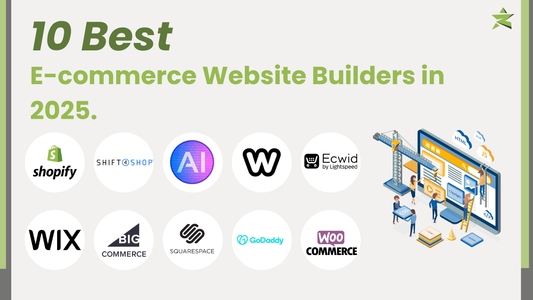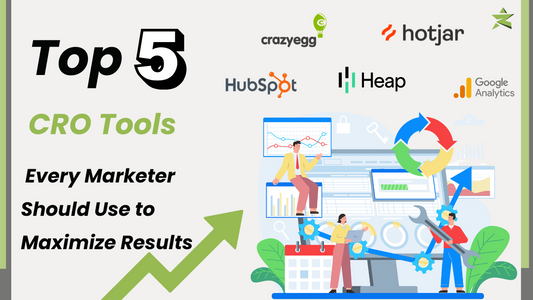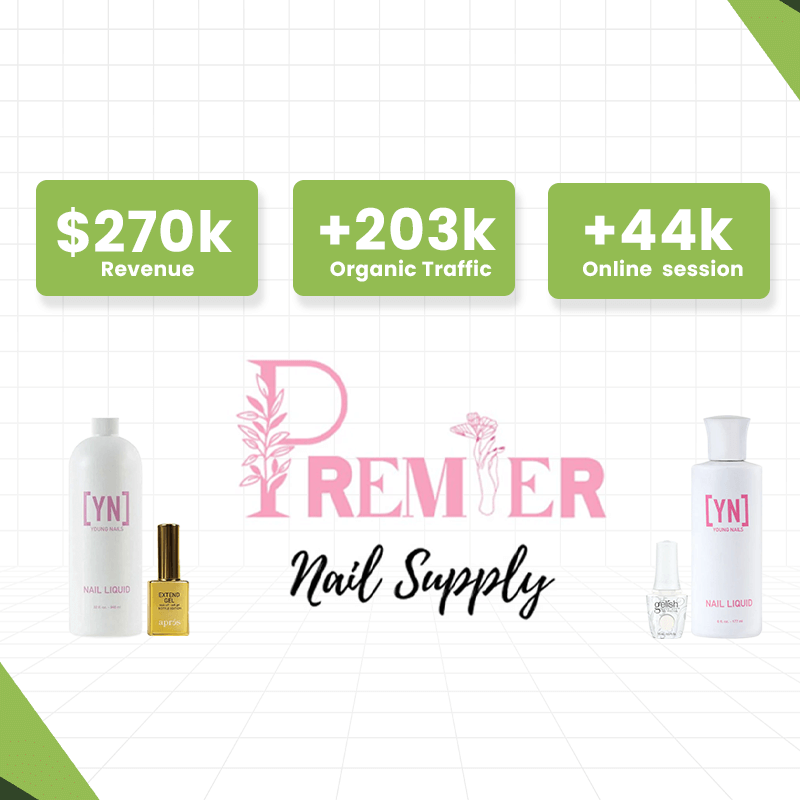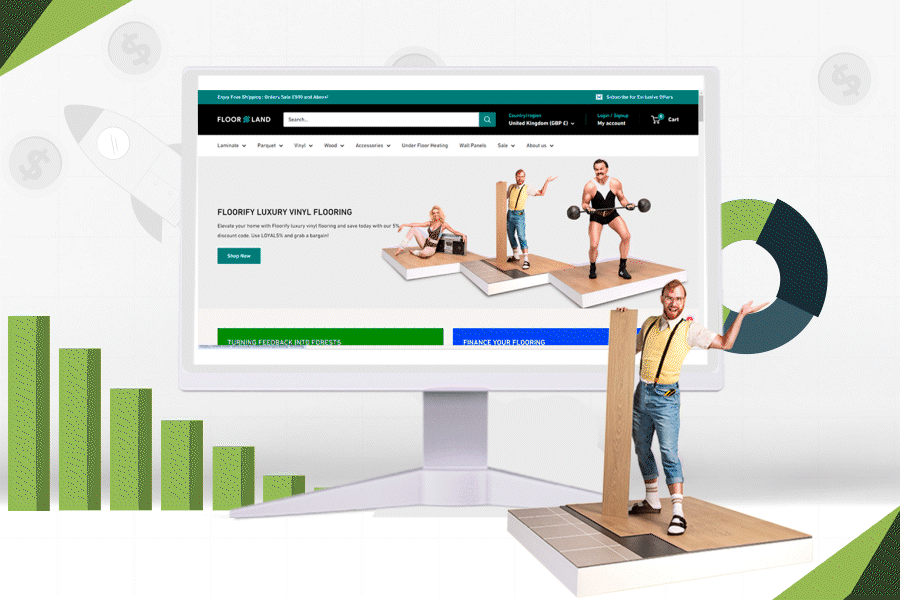E-commerce has seen explosive growth in recent years, making it a highly appealing avenue for entrepreneurs looking to build a business online. With e-commerce websites skyrocketing from 9.2 million in 2019 to 26.5 million by 2023, it’s clear that the digital marketplace is booming. If you're ready to tap into this growing sector and work for yourself, launching an e-commerce business could be a rewarding venture. Although it requires dedication, time, and a solid plan, it has the potential to bring both financial success and personal satisfaction.
In this comprehensive guide, we'll walk you through the process of starting your own e-commerce business. With the right tools and mindset, you can create a thriving online store and become your boss.
What Is E-Commerce?

E-commerce refers to the buying and selling of goods or services through the Internet. An e-commerce website acts as a digital storefront, allowing customers to shop from the comfort of their homes or on the go. While some e-commerce businesses may also have physical locations, many exist solely online, reducing overhead costs and expanding reach.
Why Start an E-Commerce Business?
There are several compelling reasons to start an e-commerce business, especially in today's digital age:
- Lower Overhead Costs: Unlike brick-and-mortar stores, an online business requires minimal investment. You’ll save on rent, utilities, and staffing while focusing on crucial aspects like marketing, website development, and inventory management.
- Wider Customer Base: With an e-commerce site, you aren’t confined by geographical limitations. Reach customers globally and increase your potential market size exponentially.
- Scalability: Online businesses offer easy scalability. As demand increases, you can grow your store without worrying about physical space.
- Customer Flexibility: Consumers can shop 24/7 from any location, making it convenient for them and driving repeat business for you.
- Access to Valuable Data: By tracking customer behaviors and preferences, you can tailor your offerings, reduce excess inventory, and make data-driven business decisions.
Types of E-Commerce Businesses
Before diving into the steps, it’s crucial to understand the different types of e-commerce businesses:

- Business-to-Customer (B2C): Retailers sell products directly to customers, similar to traditional stores.
- Business-to-Business (B2B): Companies sell products or services to other businesses, usually in bulk or through subscription models.
- Consumer-to-Consumer (C2C): Platforms like eBay or Etsy allow customers to sell products to each other.
- Consumer-to-Business (C2B): Individuals offer products or services to businesses, often in the form of freelance services, reviews, or affiliate marketing.
8 Steps to Start an E-Commerce Business
1. Define Your Business Idea
The foundation of any successful business is a strong, niche idea. Whether you’re selling handmade jewelry or offering virtual consulting services, your idea should fill a gap in the market or solve a specific problem. Passion for your product or service will also keep you motivated during challenging times.
2. Validate Your Idea
Before launching, it’s essential to validate your business idea. This involves researching your target market, understanding competition, and ensuring your product will resonate with customers. Consider market size, pricing, seasonality, and whether your product solves a real problem.
3. Create a Business Plan
A well-thought-out business plan acts as your roadmap to success. Your plan should include an executive summary, competitor analysis, product descriptions, marketing and sales strategies, and financial projections. This document will not only guide your decision-making but may also be essential if you seek investors or loans.
4. Set Up Your Business
Once your plan is solidified, it’s time to make your business official. Choose a business structure (such as an LLC, sole proprietorship, or corporation), register your business name, apply for an EIN, and open a business bank account. Don’t forget to obtain any necessary licenses and permits for your industry.
5. Source or Develop Your Products
Decide how you will acquire or create the products you plan to sell. Options include manufacturing, wholesale purchasing, or drop shipping. Drop shipping can be a cost-effective solution, allowing you to sell products without holding inventory.
6. Build Your E-Commerce Website
Your website is the face of your business, so it’s vital to choose the right e-commerce platform. Shopify, BigCommerce, and WooCommerce are popular options that provide user-friendly tools to manage inventory, process payments, and track orders. If budget is a concern, start with a free platform and upgrade as your business grows.
7. Plan Your Fulfillment Strategy
Fulfilling orders efficiently is key to customer satisfaction. While some e-commerce platforms offer integrated shipping tools, you can also outsource fulfilment to third-party logistics providers. Whichever method you choose, ensure that your customers receive their orders quickly and reliably.
8. Market Your E-Commerce Business
Marketing is essential for attracting customers to your store. From SEO and social media marketing to email campaigns and influencer collaborations, an integrated approach will drive traffic to your site. Consistency is key to building brand recognition and customer loyalty.
5 Tips for Running Your E-Commerce Business
- Focus on Customer Retention: Acquiring new customers is expensive. Keep existing ones happy with loyalty programs, excellent customer service, and personalized offers.
- Optimize Shipping Costs: High shipping fees deter customers. Offer free or discounted shipping to encourage larger orders.
- Deliver Stellar Customer Service: Provide responsive, accessible support via live chat, email, or social media to maintain positive relationships with customers.
- Diversify Sales Channels: Consider expanding beyond your website to platforms like Amazon or Instagram to maximize your reach.
- Upsell and Cross-sell: Increase order values by suggesting complementary products or offering premium options at checkout.
Bottom Line
Starting an e-commerce business can be incredibly rewarding, allowing you to turn your passions into profits while enjoying the flexibility of working for yourself. By following the steps in this guide and using smart marketing and sales strategies, you’ll be well on your way to building a successful online store.
Leap today, and explore the limitless potential of e-commerce!










